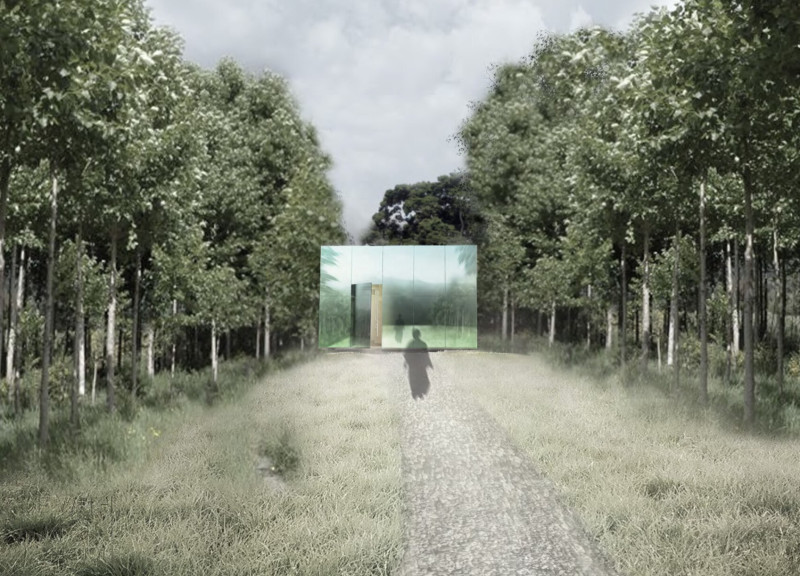5 key facts about this project
The -ion Meditation cabin is a thoughtfully designed space that aims to foster introspection and self-discovery. Set in a landscape of natural beauty, the cabin encourages users to engage with their environment while contemplating important life questions. The design connects deeply with nature, guiding individuals toward a meaningful meditative experience through its reflective surfaces and organic shapes.
Reflective Facade
The cabin features a mirrored facade that allows individuals to see their reflections in the surrounding environment. This design choice creates a connection with nature, prompting users to reflect on their identities and place in the world. As they approach the cabin, their image grows smaller compared to the larger trees and plants nearby, forming a visual reminder of the exploration of self.
Interior and Garden Interaction
Transitioning from the garden to the cabin interior enhances the overall sensory experience. The garden consists of various zones inspired by Maori symbols, particularly the koru, which encourages meditation and contemplation. This arrangement invites interaction with nature, enabling users to connect more fully during their reflective moments.
Lighting and Adaptability
Inside the cabin, there are cabinets that hold crystals designed to cast prismatic light across the space. Users can choose to reveal or conceal these crystals behind sliding pocket doors. This flexibility allows for adjustments based on personal preferences, making it easy for individuals to create the right atmosphere for either stimulation or calm.
Thermal Management
An effective heating and cooling system is also a key feature of the cabin. It uses phase change material (PCM) eutectic salts contained in sealed aluminum cannisters. This system captures solar energy to maintain comfortable temperatures throughout the year. The primary structure is made from laminated wood beams and columns, with recycled materials incorporated into the design. This choice highlights a commitment to sustainability, merging practical concerns with aesthetic appeal.
The interior invites quiet reflection through its spatial organization and intelligent use of light, creating a space where individuals can explore their thoughts in a calm environment.






















































